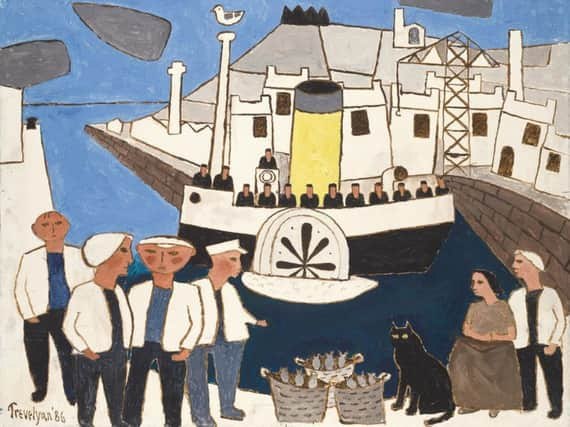Chichester's Pallant House Gallery puts the spotlight on artist Julian Trevelyan


Gallery spokeswoman Sarah Jackson said: “A painter, printmaker and designer, Trevelyan was experimental throughout his life and created an important and original body of work that was influenced by European modernist movements yet entirely his own.
“The exhibition brings together 90 paintings and prints, as well as rarely-seen sketchbooks, letters and photographs that emphasise Trevelyan’s extensive contribution to mid-20th century British art.
Advertisement
Hide AdAdvertisement
Hide Ad“Surveying the broad scope of his career, the exhibition will examine Trevelyan’s early Surrealist works, his depictions of the industrial north of England as part of the Mass Observation project, his fascination with foreign places and his years in London when he lived and worked alongside the River Thames and taught printmaking at the Royal College of Art.
“Despite painting since childhood, Trevelyan went to Cambridge University to study English literature where he joined a lively avant-garde group that was responsible for the first published Surrealist statement in Britain. In it, Trevelyan exclaimed, ‘Let us gladly shout: to dream is to CREATE.’
“In 1931, Trevelyan gave up his degree and headed to Paris to pursue what he saw as his true calling as an artist. He joined Atelier 17, the experimental printmaking studio of the painter and engraver Stanley William Hayter, where he worked alongside Alberto Giacometti, André Masson, Max Ernst and Joan Miró.
“Under Hayter’s guidance, etching became the principal medium for Trevelyan’s exploration of the subconscious mind, as can be seen in Standing Figure with Ace of Clubs (1933). As a serious student of Surrealism, he explored automatism and disassociation, recorded dreams and experimented with hallucinogens.
Advertisement
Hide AdAdvertisement
Hide Ad“Two works from his Dream Cities series – in which he ‘invented a sort of mythology of cities, of fragile structures carrying here and there a few waif-like inhabitants’ – were shown in the International Surrealist Exhibition in 1936. Despite his immersion in Surrealism in Paris, Trevelyan continued to paint in a conventional style when travelling. He labelled these parallel modes of expression his ‘Jekylls and Hydes’.
“In the late 1930s Trevelyan was invited to take part in the Mass Observation project which aimed to record the routines and rituals of everyday life in Britain using volunteer observers, diarists and participants.
“Commissioned to depict life in Bolton, Trevelyan created a powerful series of collages and paintings of the industrial north. The collages, including Rubbish May be Shot Here (1937), incorporated allusions to contemporary politics and popular culture by way of magazine and newspaper cuttings, old catalogues and bills, and the paintings, including The Potteries (1938), were darkly expressive yet deeply personal in their evocation of poverty and deprivation.
“Trevelyan also met the Ashington Miners, now better known as the Pitman Painters.
Advertisement
Hide AdAdvertisement
Hide Ad“Having had little formal training himself, Trevelyan was fascinated by these self-taught painters, believing strongly that anyone could be an artist. In 1939, shortly after resigning from the London Surrealist Group, he organised an exhibition of their work at the Peckham Health Centre.
“A section of the exhibition will be devoted to works made during Trevelyan’s extensive travels, both those he undertook in Africa during the war and subsequent travels with Fedden, in Europe, India and America. These works span his entire life.”
Advertisement
Hide AdAdvertisement
Hide AdAdvertisement
Hide AdAdvertisement
Hide Ad